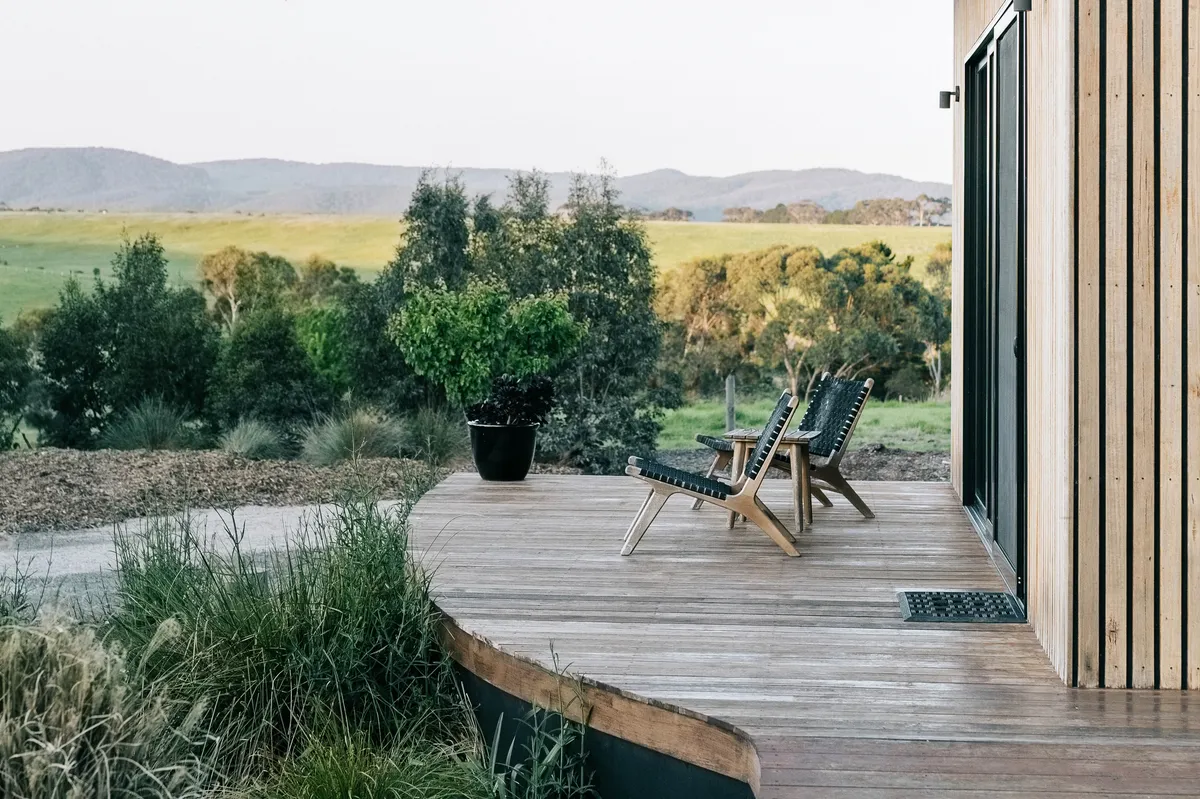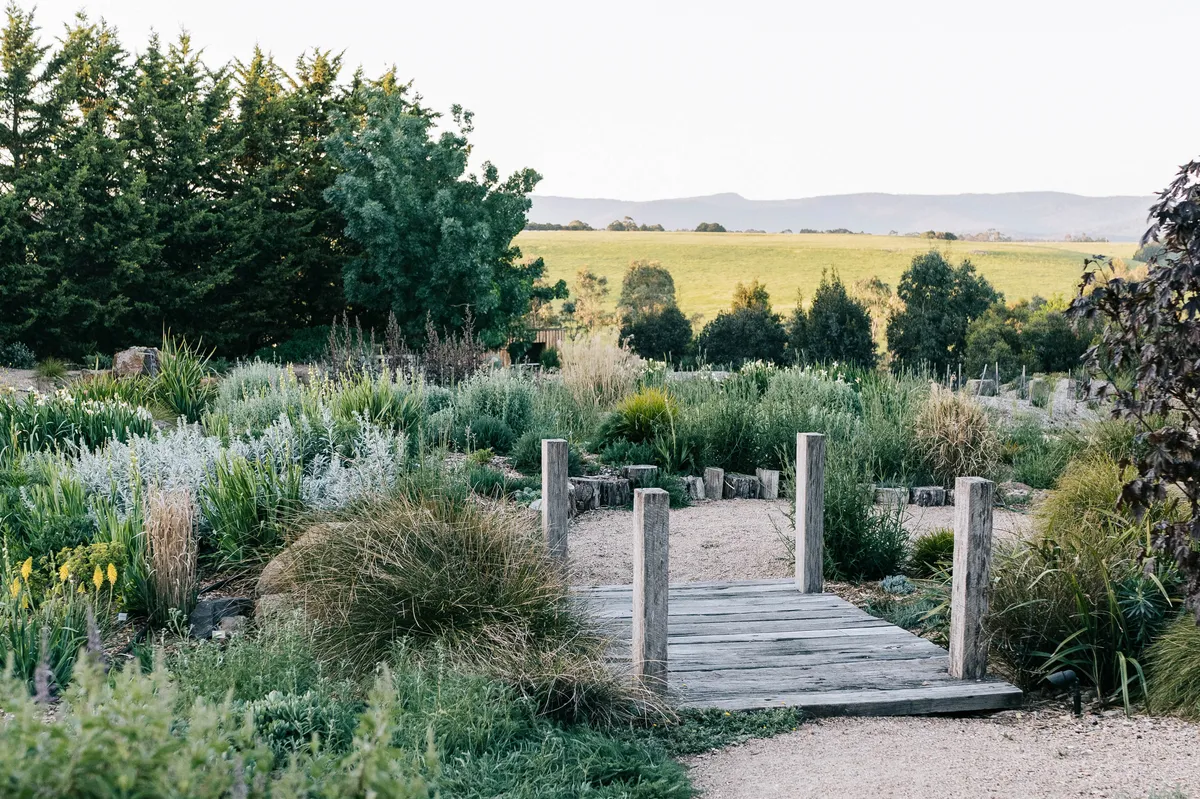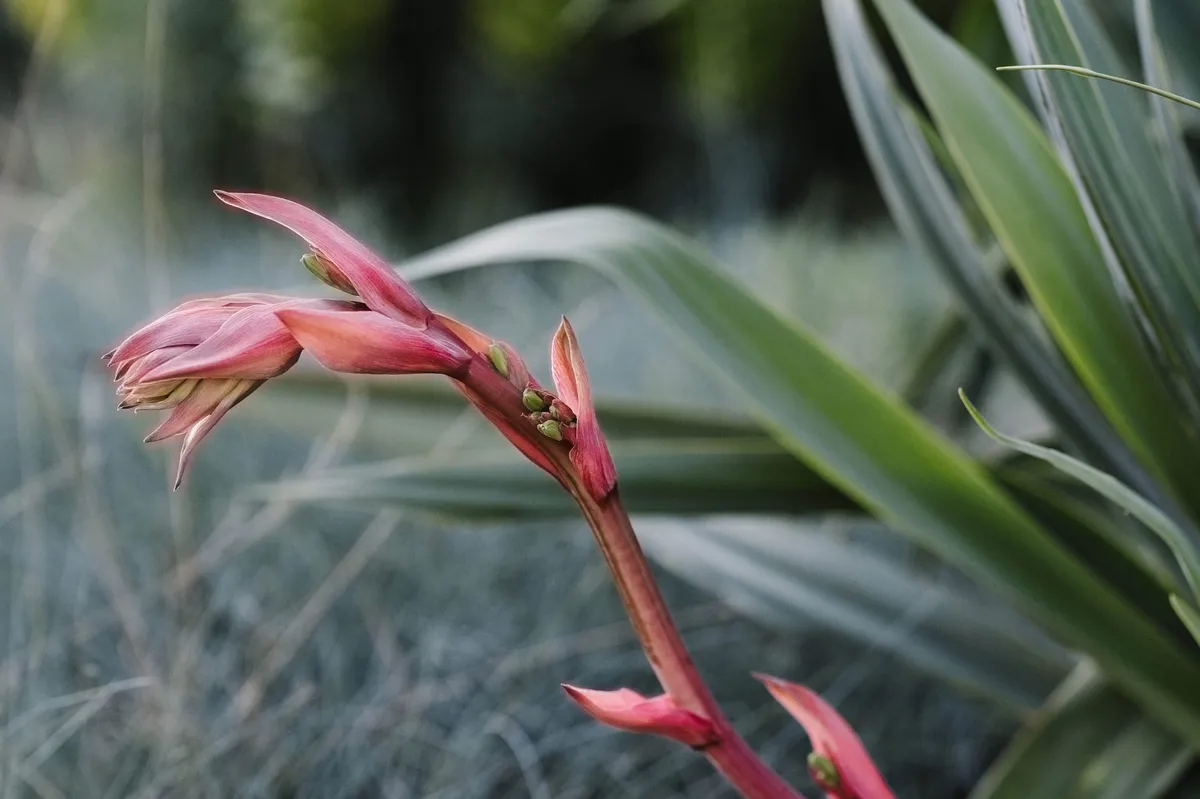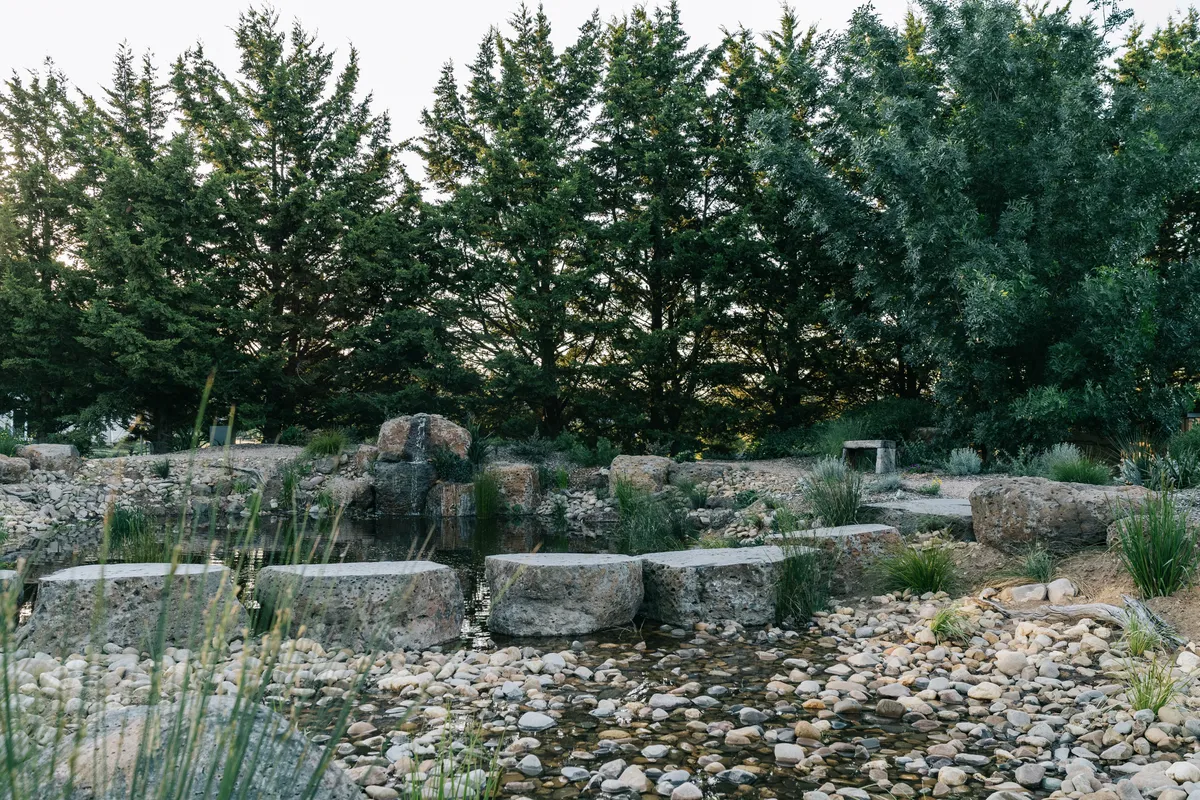Australian landscape designer Kathleen Murphy understands how both the surrounding landscape and a client’s individual interior style play a vital role in shaping her garden designs. Clients are drawn to her personal touch and ability to transform a space into something special, as if it has always belonged.
“For me it is important to integrate the prevailing landscape into the look and feel of any outdoor space I create. I take time to get to know my clients – how they use their homes and what is important to them. Gardens should be lived in and enjoyed; it is never just about the aesthetic.”

Having moved to their family home 14 years ago, Kathleen and her husband had been busy juggling work and raising their three children, while Kathleen organically established her business. The property, a 1980s country ranch-style house, is set in just under two acres, and at the front Kathleen inherited an established, English-inspired garden. At the rear, the backyard was a blank canvas, and in 2017 Kathleen gave herself the space to rethink it – creating a studio for her business and an inspirational family garden.
Kathleen’s approach followed the same principles she applies with clients. Her husband and three children, aged from 13 to 16, were encouraged to share their individual needs and wants: space to kick a ball around and ride bikes, and defined zones for a billabong, grotto and fire pit. “It’s a place for me to experiment with new ideas, and a space for us as a family to unwind, relax, explore, and feel connected to nature. This has been life-changing in terms of its effect on my creativity.”
IN BRIEF
What Sustainable family garden that acts as a testbed for its designer owner.
Where Victoria, Australia.
Size Just under two acres.
Soil Heavy volcanic black clay. Climate From 40oC in summer, to -5oC with frosts in winter.
Hardiness zone USDA 1.
The design frames the amazing view of the surrounding Macedon Ranges, and mirrors the contours of the landscape, with raised earth mounds facilitating drainage in the nutritious, but heavy, clay soil. “I always consider the view from every window in the house, and like to draw the eye out to something special in the garden.”

The deck is made from sustainably sourced Merbau timber, and is framed with the large, strappy Carex appressa. The trees in the background are multi-stemmed Eucalyptus forresterae ‘Little Star’.

Throughout the garden, planting is intentionally hardy as extremes of weather range from 40-degree heat to harsh frosts. "I like to layer structural Australian natives, such as long, grass-like Lomandra, with succulents and Westringia, along with more exotic Mediterranean and textural Californian foliage. Pathways are lined with olive and gum trees and medicinal herbs, and tall masses of sticky boobialla (Myoporum viscosum) screen boundaries," says Kathleen.
"Seasonal colour is important, and I use the garden as a test bed for client projects – if plants don’t survive, they are not replanted. I love pops of seasonal colour – sedum for burnt-orange autumn accents, and Verbena bonariensis, Salvia nemorosa for their purple tones, which work well with our year-round palette of soft muted greys, greens and blues.” Beschorneria yuccoides (below) is one of Kathleen's favourites, with arching racemes of yellow-green tubular flowers with showy, pinkish-red bracts above fleshy, grey-green leaves.

Kathleen has created a billabong that runs through the garden, a favourite spot for the family to relax. Billabong is an Aboriginal term for a pool of water left behind from a river after it has altered its course. This one has been artificially created and is lined with clay. Large basalt boulders have been sawn to create stepping stones. These were sourced nearby, left over from farmers clearing paddocks to grow crops. Aquatic plants include Australian natives, such as milfoil (Myriophyllum cripatum) nardoo (Marsilea drummondii), which oxygenate the water for the three eastern long-necked tortoises and native fish.

Australia is experiencing a change in its weather and enduring longer, drier periods throughout the year. Rather than simply gathering water in bulky water butts, Kathleen makes use of new techniques for collecting, using and saving water in a more aesthetically pleasing way. She installed an underground wastewater-treatment system that links to the house and studio. In Australia, all new residential housing developments with more than an acre of land are required to have a water-treatment system that involves taking the wastewater from toilets and household use into an at-home, mini-treatment plant where the water is recycled for garden purposes.
The garden also benefits from an irrigation system that feeds the garden in part from the billabong. Water is also collected from rooftops, which is standard practice in Australia, with the government even giving homeowners a rebate on the cost of installing a water tank. A similar system could be used in the UK, where, instead of using a water butt, collected water could be fed discreetly into a more attractive, open, ornamental pond or small water feature using a pump system connected to a tap. All plants are drought tolerant as it would be impossible to irrigate the full garden area.